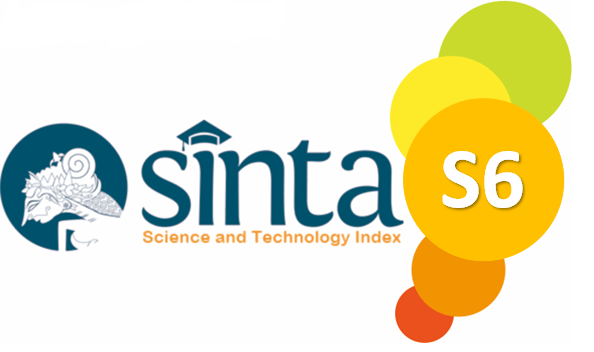Pendekatan Science, Technology, Engineering, and Mathematics (STEM) untuk Meningkatkan Kemampuan Pemecahan Masalah Fisika Siswa pada Konsep Tekanan Hidrostatis
DOI:
https://doi.org/10.52434/jp.v13i1.831Abstract
Tujuan dari penelitian ini adalah untuk mengetahui peningkatan kemampuan pemecahan masalah fisika siswa melalui pendekatan STEM pada konsep tekanan hidrostatis. Penelitian dilakukan di salah satu SMA Negeri di Kabupaten Garut pada tingkat kelas XI Ilmu Alam dengan jumlah sampel sebanyak 40 siswa. Jenis penelitian ini adalah pre eksperimen dengan rancangan one shoot pretest-posttest group. Data kemampuan pemecahan masalah fisika siswa diperoleh dari hasil tes awal (pretest) dan tes akhir (posttest) kemampuan pemecahan masalah fisika yang berbentuk soal uraian konsep tekanan hidrostatis. Hasil penelitian yang diperoleh setelah diterapkannya pendekatan STEM yaitu peningkatan kemampuan pemecahan masalah fisika siswa berdasarkan nilai N-Gain sebesar 0,67 dengan kategori sedang. Hal tersebut menunjukkan bahwa penerapan pendekatan STEM dapat meningkatkan kemampuan pemecahan masalah fisika siswa pada konsep tekanan hidrostatisReferences
Daftar Pustaka
Becker, K. dan Park, K. (2011). Effect of Integrative Approaches Among Science, Technology, Science, Engineering and Mathematics (STEM) Subject and Students Learning: A preliminary Meta-Analysis. Journal of STEM Education, 12(5), hlm. 23-37.
BSNP. (2006). Standar Isi untuk Satuan Pendidikan Dasar dan Menengah. Jakarta: Depdikbud.
Creswell, J.W. (2014). Research Design: Quantitave, Qualitative, and Mixed Methods Approaches. United Stated of America: SAGE Publications.
Elliot, dkk. (2001). The effect of Interdisciplinary Algebra/Science Course on Students Problem Solving Skills, Critical Thinking Skill, and Attitude Toward Mathematics. International Journal of Mathematical Education in Science and Technology, 32(6), hlm. 811-816.
Fortus, D., dkk. (2005). Design-based science and Real World Problem Solving. International Journal of Science Education, 27(7), hlm. 855-879.
Fraenkel, J.R., Wallen, N.E., dan Hyun, H.H. (2012). How to design and evaluate research in education eighth edition. New York: McGrow Hill Company.
Hake, R. (1998). Interactive-engagement versus traditional methods: A six thousand-student survey of mechanics test data for introductory physics courses. Am. J. Phys. 66 (1).pp.64-74.
Heller, K. & Heller, P. (2010). Cooperative Problem Solving Physics A User’s Manual Why? What? How?. University of Minnesota with Support from the National Science Foundation, University of Minnesota, and U.S. Department of Education.
Jolly, Anne. (2014). Six Characteristic of a Great STEM Lesson. Education Week Teacher. Diakses dari https://www.edweek.org/tm/articles/2014/06/17/ctq_jolly_stem.html
Kolb, D. A. (1984). Experiential Learning: Experience as The Source of Learning and Development. New Jersey: Prentice Hall.
OECD. (2014). PISA 2012 Result: Creative Problem Solving: Students Skills in Tackling Real Life Problems (Volume V). PISA: OECD Publishing.
Quang, L.X. dkk. (2015). Integrated Science, Technology, Engineering and Mathematics (STEM) Education through Active Experience of Designing Technical Toys in Vietnamese Schools. British Journal of Education, Society and Behaviuoral Science, 11(2), hlm. 1-12.
Wang, H., dkk. (2011). STEM integration: Teacher Perceptions and Practice. Journal of Pre-College Engineering Education Research, 1(2), hlm. 1-13.


1.png) Download Journal Template
Download Journal Template










